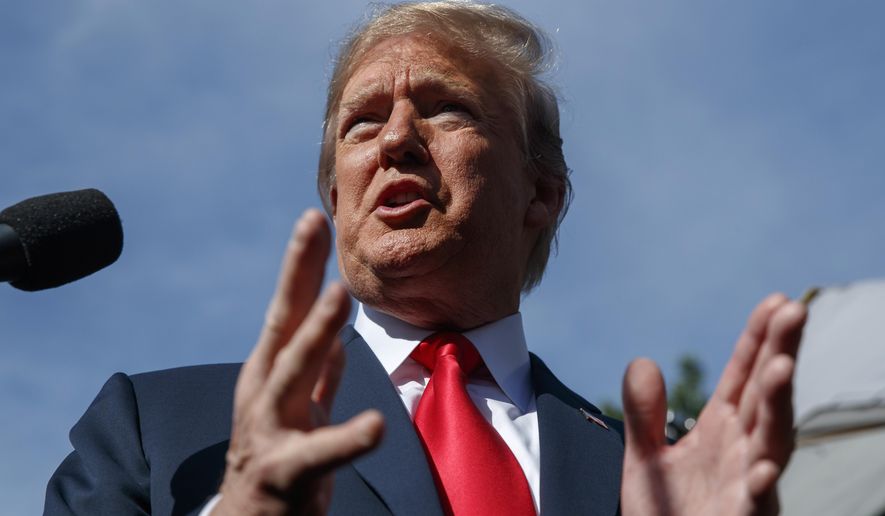OPINION:
Not everyone has the chops to be a leader of nations. Appealing to the better angels of human nature is a lofty approach to leadership, but the unforgiving streets of New York City have taught President Trump another way to get results. After more than a year of watching the president in action, some people still don’t appreciate what a little fear can accomplish. Mr. Trump doesn’t want a trade war — he just wants his trade partners to have dread of one. Dread can change behavior.
There were startled looks in the room at the G-7 summit in Canada when the U.S. president faced off with arms crossed against a brace of world leaders, telling them that the United States is “the piggy bank that everybody is robbing,” and he intends to do something about it. That brace of world leaders are still smarting from the sting of a new 25 percent tariff on steel products and a 10 percent tariff on aluminum from the European Union, Canada and Mexico — all top trading partners that run trade surpluses with the United States. The EU now threatens to retaliate with tariffs on U.S. goods, worth $7 billion, and Canada vows to retaliate with tariffs on goods worth $13 billion more.
“Tariff” is just another word for tax. For the tax-cutting president to propose new levies on essential imports on consumer, military and infrastructure goods seems an about-face. But maybe it’s not. The Trump tariffs are meant to be an attention-getter, like the swat of a rolled-up newspaper that makes more noise than pain. Mr. Trump has made leveling the trade playing field a central theme of his presidency, vowing to chip away at the U.S. trade imbalance that has existed since 1975 and is routinely the world’s largest.
The president’s critics scour the thesaurus for mean words to call him, and, pointing to his G-7 performance, apply a new one: protectionist. But with allies’ eyes still wide with surprise, Mr. Trump revealed his endgame: “No tariffs, no barriers, that’s the way it should be. And no subsidies. I even said no tariffs.”
To propose the elimination of the thousands of tariffs that nations deploy as they seek to gain economic advantage over their competitors is a bold challenge. Tariff-free trade is fair trade, and a marketplace unencumbered by protectionist rules protects the American dream.
Picking on the friendly G-7 nations — Britain, France, Germany, Canada, Italy and Japan — may seem a curious strategy. After all, while Mr. Trump hectors Canada over its 270 percent tariff on U.S. dairy products, the average of all Canadian tariffs is only 0.85 percent, lower than the average levy of 1.6 percent of the United States and the European Union. By turning heads with get-tough rhetoric and then floating the no-tariff balloon, the president has broached a subject with harsh words that could have a long-term global benefit.
The primary target of Mr. Trump’s trade ire is not the G-7, but China, which imposes an average tariff of 3.5 percent, and ran a $365 billion trade surplus with the United States. China’s artificial devaluation of its currency relative to the dollar further gives its exports a price advantage over U.S. products. On Friday the White House announced tariffs on $50 billion worth of Chinese goods to combat the trade imbalance that is worsened by persistent theft of U.S. intellectual property. Having offered to buy $70 billion worth of U.S. goods if Mr. Trump dropped his tariff threat, China now vows retaliation.
It’s the rule of the busy streets of New York that if you don’t like getting jostled, stay home. The man who moved from New York City to the White House and started shaking up everything sent the U.S. fleet to disrupt the nuclear games of Kim Jong-un. No one got hurt and the two men have returned from the first meeting of their mutual admiration society. Not every bromance begins with a bow.
If the United States and North Korea can set aside their historical enmity and come to terms, critical trading partners, including China, surely can find a way to level the playing field for international commerce. Rather than trading punch for punch, they should accept the Trump challenge to get to a trading system with “no tariffs.”




Please read our comment policy before commenting.